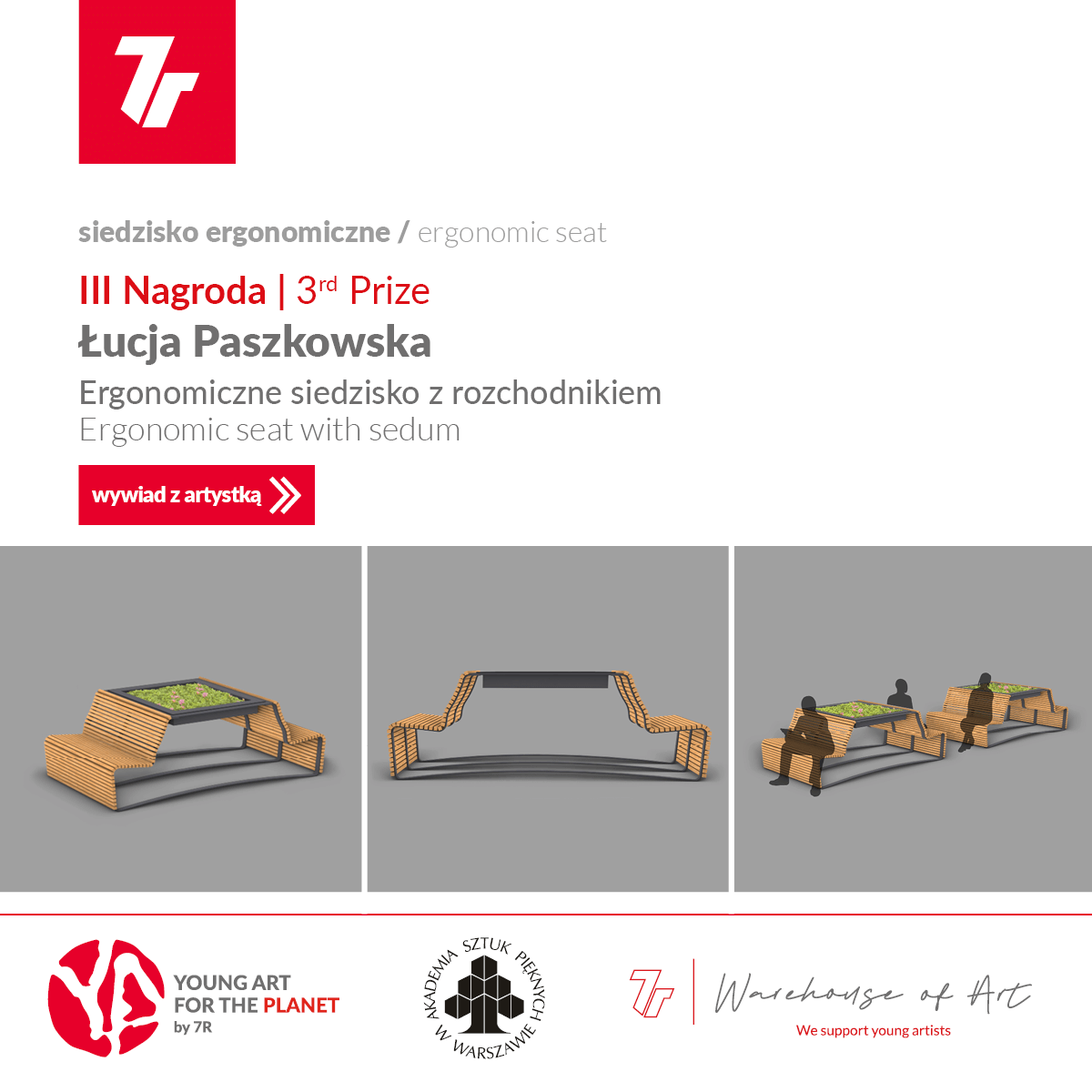Imitating nature

“I would like man to help the environment with technology,” says Łucja Paszkowska, whose seating with sedum project has won third prize in the 7R Warehouse of art ‘Young art for the planet’ competition for the ‘Ergonomic seating’ section.
What was the inspiration behind your competition entry design?
Łucja Paszkowska: Nature. It is the inspiration behind all of my designs. In it I see infinite possibilities in the sense that there exists a point where human imagination ends but there is no such point in nature. Nature is also coherent and at the same time varied. With this chaos does not creep in but it its peaceful and balanced. This is very important in my work. I would like human designs to copy nature so that they have no unnecessary elements excesses or ornamentations. The properties of a design should serve some cause; they should be thought through and functional. While I was designing it, I also concentrated on the user. I want my designs to talk to people.
So nature plays an important role in your work but is this true only for nature?
I wanted to show with my design that it is possible to combine technology, the environment and man, that these three separate realms could work together to create a whole. This is what I stick to in my designs. I want man to support the environment through technology. Designs that are well-thought through can affect people’s consciousness and emphasise that everything that surrounds us is for something. When you use the appropriate means and materials, such designs do not have to be a burden on the environment and can at the same time meet the needs of the user.
Your design for ergonomic seating includes a pot with sedum. Why exactly did you choose this plant?
Sedum is a fantastic plant. It is a succulent that can live under almost any conditions. This plant can suck up water and carbon dioxide, which is beneficial to the surroundings. When you use the right system in the pot, the sedum does not require much looking after. It is resilient against both the frost and the wind and throughout the year it pleases the eye with its different shades of green.
Next, the seating frame is made out of flat steel bars, which gives the construction strength. Steel has a long life and if used properly it can be used again. Wooden surfaces are impregnated with oil and screwed onto the frame. The panels are made out of alder, which is resilient against changing atmospheric conditions.
Could you tell us what projects you are working on now?
I am completing the design of a screen wall for teleconferencing. It is going to be both useful and ecological and it is this final aspect that I am now concentrating on. I want this product to be totally biodegradable. Nature has been creating things for billions of years and it doesn’t destroy itself. I would like design to be good for the ecosystem and for my designs to copy the way nature works so that unnecessary things are not brought to market to then litter the world.
About Warehouse of Art
The 7R Warehouse of art ‘Young art for the planet’ competition was open to students and graduates of Warsaw’s Academy of Fine Arts. Its guiding motto was “Technology, Ecology, People, Coexistence”. The competition requirement was to create a project of utility art with an ecological theme in one of three categories: Ergonomic seating, murals on the side of a fire water tank and an ecological 7R gadget. In total, 26 entries were submitted. The awarded projects are available at 7rwarehouseofart.pl.





